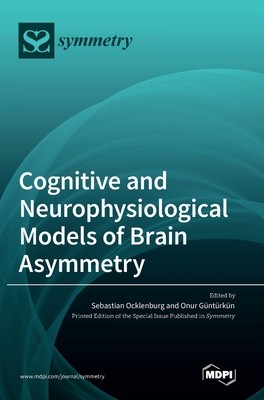
- We will send in 10–14 business days.
- Publisher: MDPI AG
- ISBN-10: 3036542507
- ISBN-13: 9783036542508
- Format: 17 x 24.4 x 2.1 cm, hardcover
- Language: English
- SAVE -10% with code: EXTRA
Cognitive and Neurophysiological Models of Brain Asymmetry (e-book) (used book) | bookbook.eu
Reviews
Description
Asymmetry is an inherent characteristic of brain organization in both humans and other vertebrate species, and is evident at the behavioral, neurophysiological, and structural levels. Brain asymmetry underlies the organization of several cognitive systems, such as emotion, communication, and spatial processing. Despite this ubiquity of asymmetries in the vertebrate brain, we are only beginning to understand the complex neuronal mechanisms underlying the interaction between hemispheric asymmetries and cognitive systems. Unfortunately, despite the vast number of empirical studies on brain asymmetries, theoretical models that aim to provide mechanistic explanations of hemispheric asymmetries are sparse in the field. Therefore, this Special Issue aims to highlight empirically based mechanistic models of brain asymmetry. Overall, six theoretical and four empirical articles were published in the Special Issue, covering a wide range of topics, from human handedness to auditory laterality in bats. Two key challenges for theoretical models of brain asymmetry are the integration of increasingly complex molecular data into testable models, and the creation of theoretical models that are robust and testable across different species.
EXTRA 10 % discount with code: EXTRA
The promotion ends in 9d.16:57:30
The discount code is valid when purchasing from 10 €. Discounts do not stack.
- Publisher: MDPI AG
- ISBN-10: 3036542507
- ISBN-13: 9783036542508
- Format: 17 x 24.4 x 2.1 cm, hardcover
- Language: English English
Asymmetry is an inherent characteristic of brain organization in both humans and other vertebrate species, and is evident at the behavioral, neurophysiological, and structural levels. Brain asymmetry underlies the organization of several cognitive systems, such as emotion, communication, and spatial processing. Despite this ubiquity of asymmetries in the vertebrate brain, we are only beginning to understand the complex neuronal mechanisms underlying the interaction between hemispheric asymmetries and cognitive systems. Unfortunately, despite the vast number of empirical studies on brain asymmetries, theoretical models that aim to provide mechanistic explanations of hemispheric asymmetries are sparse in the field. Therefore, this Special Issue aims to highlight empirically based mechanistic models of brain asymmetry. Overall, six theoretical and four empirical articles were published in the Special Issue, covering a wide range of topics, from human handedness to auditory laterality in bats. Two key challenges for theoretical models of brain asymmetry are the integration of increasingly complex molecular data into testable models, and the creation of theoretical models that are robust and testable across different species.


Reviews